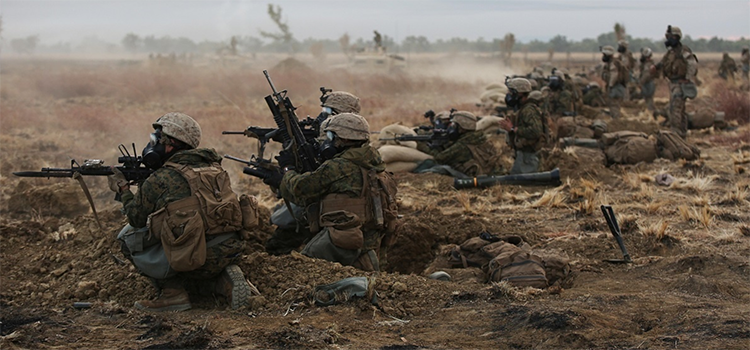The field inspires a range of emotions that vary depending on your MOS and how long you’re going to be there. For personnel other than grunts, one can reasonably expect tents, a field mess hall, trucks, and time away from the office. The infantry is still here from last month with MREs in a flooded fighting hole. Regardless of occupation, we all give our weapons a final onceover and load our magazines with freedom before heading down range.
The timeframe to hurry up and wait is unknown and if you’ve exhausted your usual playlist of metal, rap, pop (or whichever genre you’re into), you may want to discover something new. It’s easy to forget that our day-to-day routines in the military are interesting, and somewhere in America, there’s a kid who thinks your job is badass — because it is. Get pumped with these ancient warrior playlists to get rounds down range and deliver democracy right on target.
1. Unite the clans of the Highlands
The ancient Celtic Nations of western Europe passed down their traditions through music from one generation to the next, using instruments such as flutes, whistles, the bagpipes, the Celtic harp, drums, and fiddles. Knowledge on how to construct these was passed down through Clans through parental tutelage. The traditions evolved into the profession of the bard, an artist who chronicled the exploits of each Clan through song and poetry. These professional musicians were important to Celtic culture because it was through song that fame and infamy would spread.
2. It’s time to raid like a viking
The Vikings have captured the imagination for centuries. It is known that horns, flutes, panpipes, skalmejen, jaw harps, lyre, tagelharpa, rebec, and drums were echoed in the great halls of jarls and kings. Unfortunately, their compositions did not survive the test of time, as there are no written works, so we can only speculate how their music sounded.
3. March on Rome like a legionnaire
The Romans had a uniform style of music that rarely deviated into original pieces, yet this did not deter them from reciting their songs in their daily lives. Musical training was known as a sign of one’s education or religious devotion. Romans could also participate in contests that attracted wide audiences to win fame and money. The tuba was used for signaling orders to troops in contact, funerals, stage performances, and gladiator games.
4. Set an Aztec ambush
The Mexica people of the Aztecs played one of two types of instruments: wind and percussion. Similar to other cultures, they developed professional musicians called ‘blowers and beaters.’ They carried important responsibilities of providing entertainment during festivals and musical rites for funerals, sacrificial rituals, and recounting the history of conquests. Blowers and beaters crafted drums, shakers, nutshell rattles, bells, flutes, whistles, rain sticks, conch trumpets, ocarinas, and whistling jugs in their arsenal to provide a national identity and troop movements in battle.
5. Samurai steel for the Emperor
Traditional Japanese music consisted of percussion, string, and wind instruments for various ceremonies of importance. Traditional music was broken down from three parent genres: shōmyō, gagaku, and folk music. Shōmyō is Buddhist chanting. Gagaku is imperial court music for high-level ceremonies. Folk music further broke down into four more sections: work music, religious music, festival music, and children’s music. The Samurai listened to and patronized the arts as a form of enrichment.
This article originally appeared on We Are The Mighty
More From We Are The Mighty
Navy Vying to Be the Most Inked Service with New Tattoo Policy
7 Things to Do Before You Get that New Tattoo
The Irish-American Who Invented the Modern Tattoo Machine
Follow We Are The Mighty on Twitter
READ NEXT: WHY TATTOOS ARE ONE OF THE MOST TIME-HONORED TRADITIONS
READ NEXT: THE MEANING BEHIND 19 CLASSIC NAVY TATTOOS
READ NEXT: HOW DOUGHNUTS HAVE A STORIED HISTORY IN THE TRENCHES



